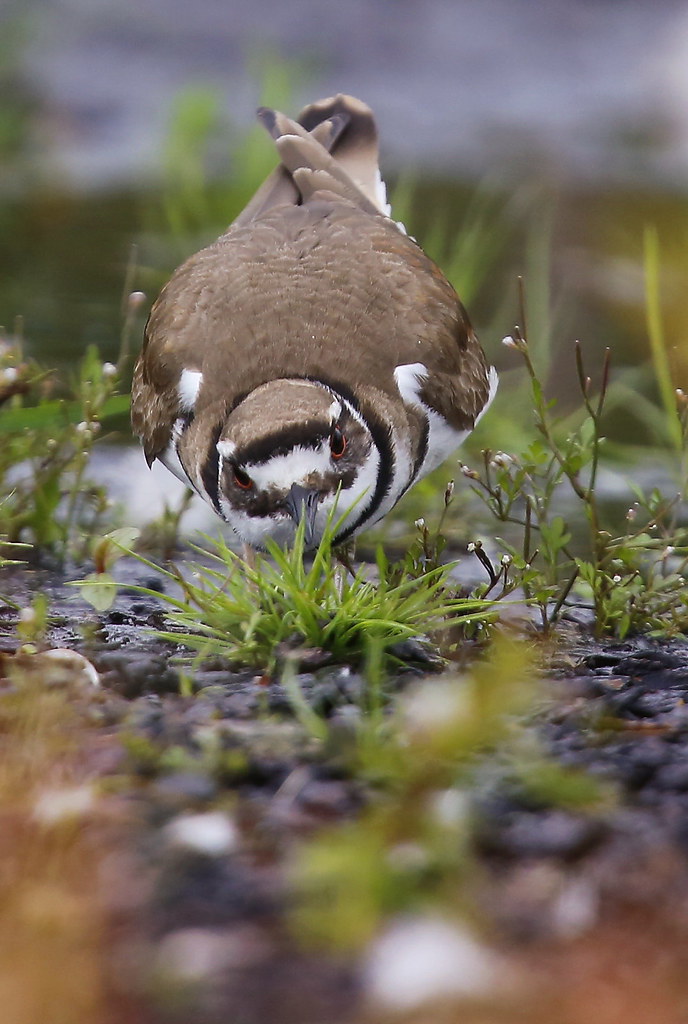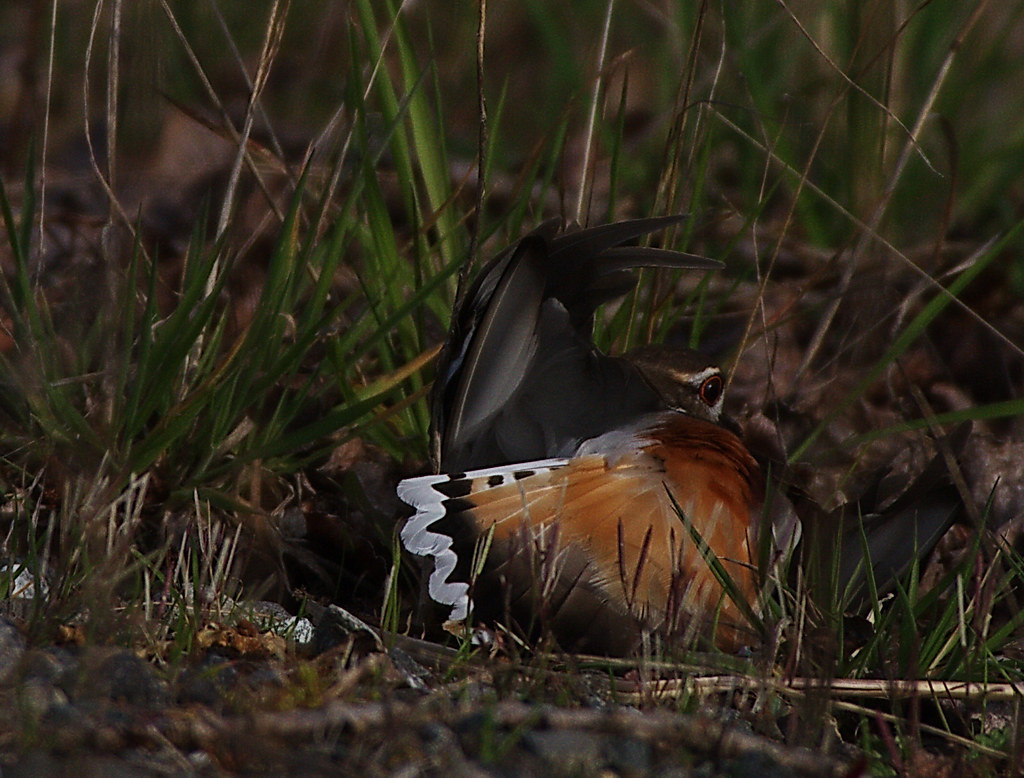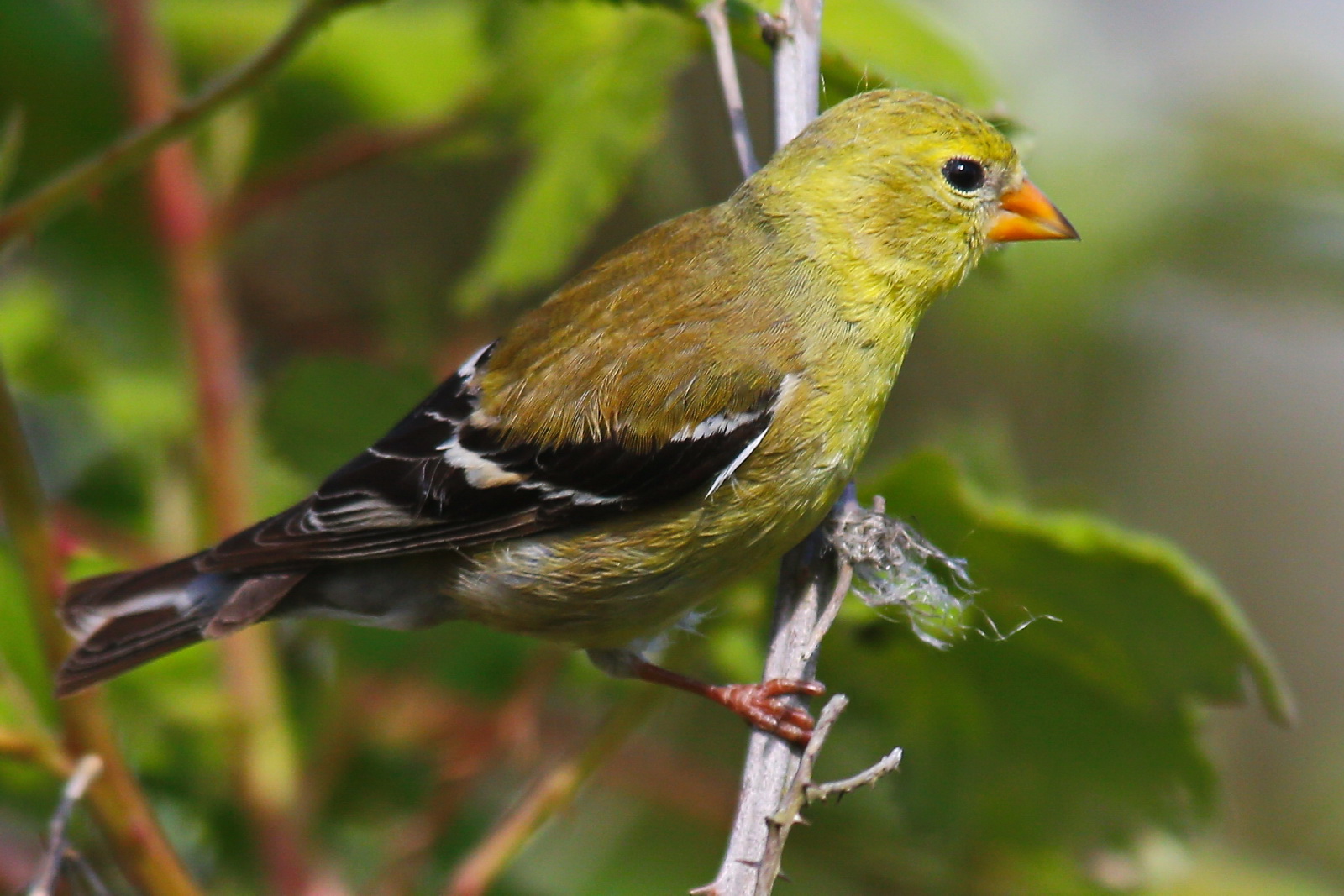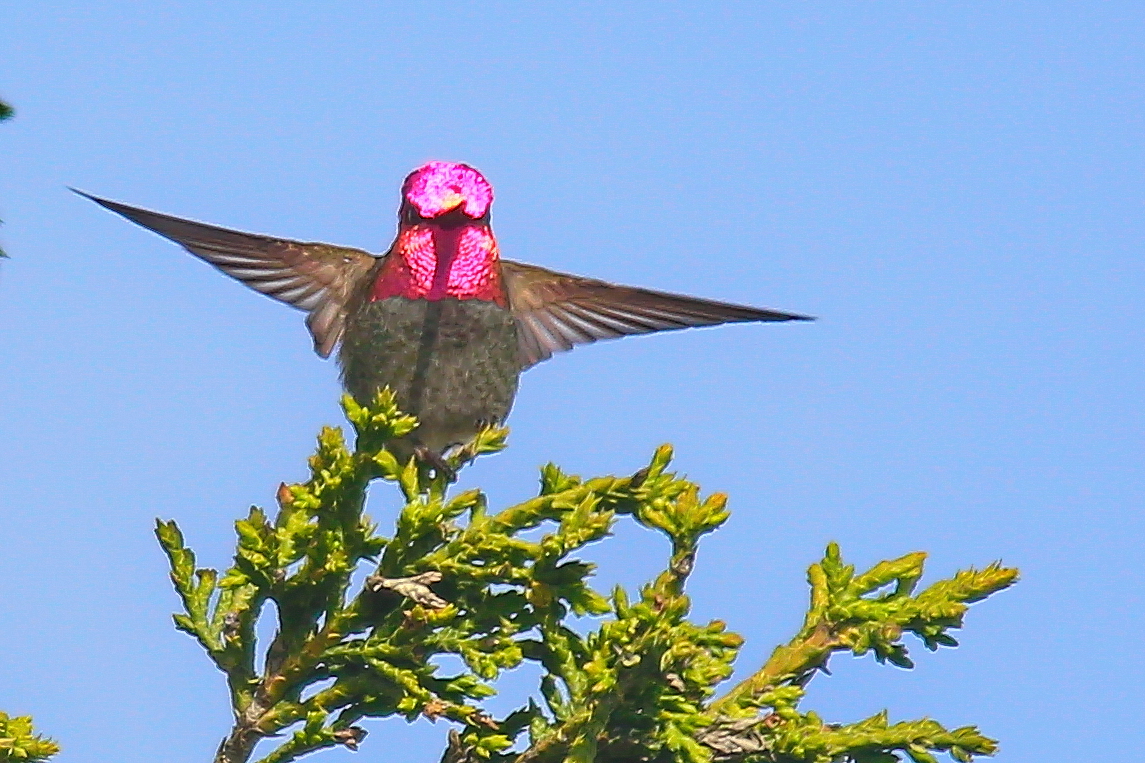Just a few from this morning. Now I'm headed over to Andy's (Lakeside57 from AS fame) to hopefully catch the osprey pair catching trout...Lake Tuck was stocked this past Tuesday...and have him check out my 660, which may have an air leak..and maybe get his ripping chain and 36" Alaska mill for a project which I'll elaborate on in a few days.
I also captured some kind of pigeon I haven't seen, a duck momma and her chicks, Canada Geese landing on the water, killdeer, and red wing blackbirds and saw glaucous gullls swallows, starlings and robins, and of course, crows
Being a lousy bird id'er, I don't know what this is. It doesn't appear to be an American Goldfinch:
The Anna's Hummer that always hangs out here, never came close except for once. this is a tight crop
Here he is up close, rousting out the yellow bird that was posing for the camera...heh!
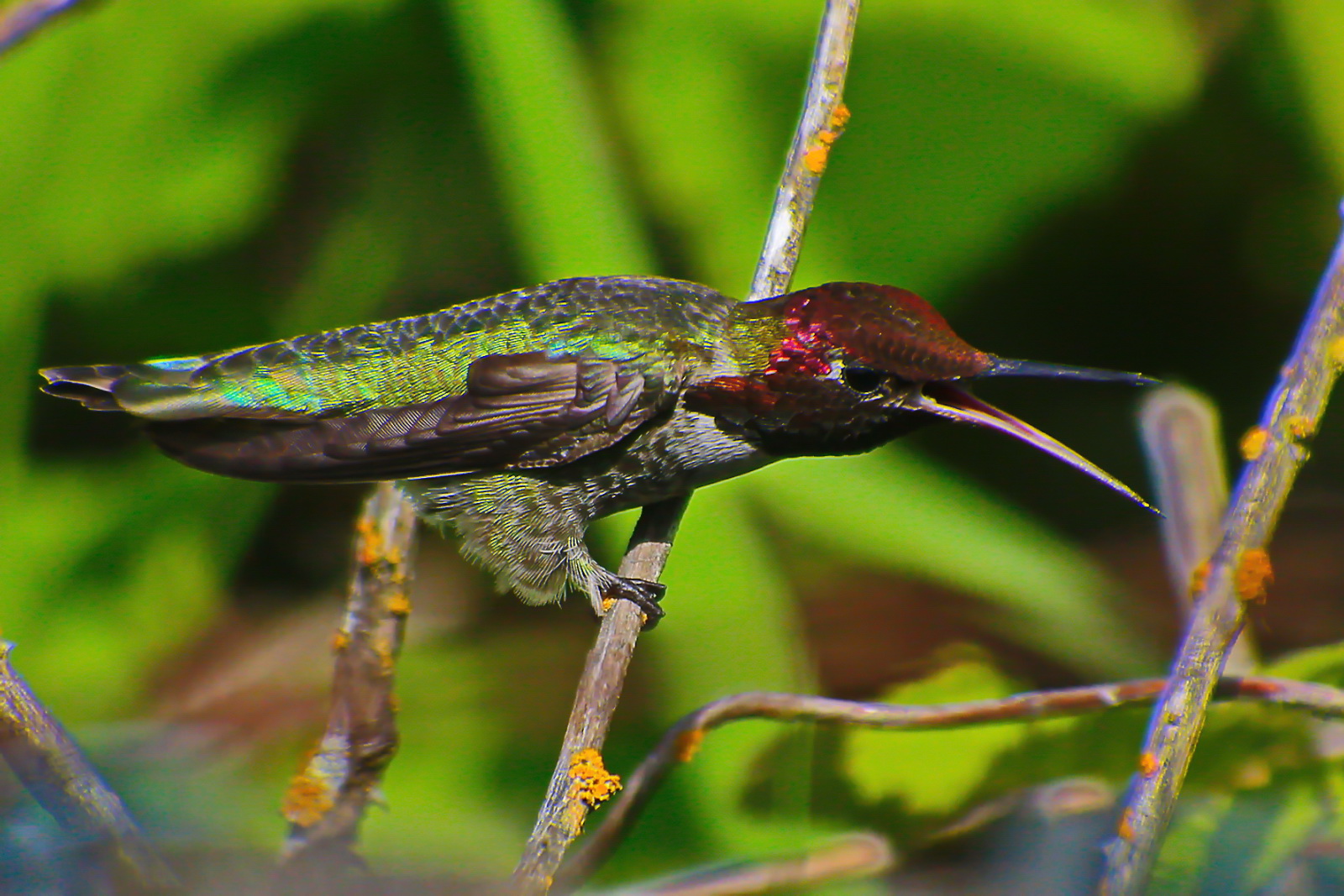
The thee closest were shot handheld, as the birds were too close for where I had the tripod set up. I had a 1.4x teleconverter on the 500, so these shots were all at 700m, or 14 power, with the full frame amazingly good Canon 5D Mk III. I think the hummer is one of my sharpest images yet.... which pleases me, as the lens and teleconverter are outdated by 18 years. I'll be soon buying another 70-200 version II, which is the sharpest and best 70-200 ever made, to replace the stolen one. Hard to find a used one for $2100 or less, as they get snapped up pronto. Retail has jumped up a tad to $2500. I never had the version III 1.4 or 2x teleconverters either, but am looking. They sometimes gio for under $400..new is $500... a big chunk of change for a tool that needs to be mated with a lens to work! But the version III's are needed to keep all the incredible optics of the new version II super telephoto lenses. Doubt I'll ever be able to afford one, as they all cost from $7200- 12,000.
